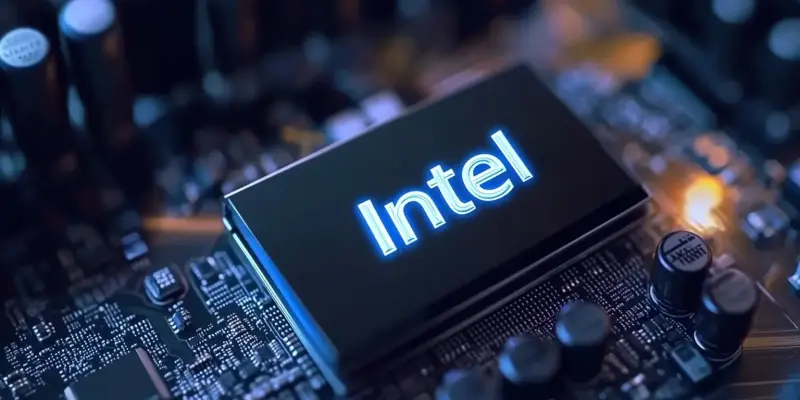As Intel gears up to launch its highly anticipated Nova Lake CPU lineup in 2026, the technology world is abuzz with excitement and speculation. This release is anticipated to succeed the somewhat disappointing Arrow Lake-S series, and the core configurations for Nova Lake indicate a substantial leap in performance capabilities. Intel aims to reclaim its dominance in the CPU market by offering significant innovation and efficiency to challenge AMD’s expected Zen 6 CPUs.
The Nova Lake Lineup: A Promising Leap in Performance
Core Configurations and Performance Enhancements
The flagship desktop variant, Nova Lake-S, is particularly noteworthy due to its potentially groundbreaking core configuration. With up to 16 P-Cores and 32 E-Cores, the core count effectively doubles that of its predecessor. This enhancement is primarily attributed to a dual compute tile design, which Intel hopes will dramatically bolster computational power. The surge in core count is a strategic move to challenge AMD’s upcoming Zen 6 CPUs, reflecting a focused attempt to close the performance gap that had widened in recent years.
Intel plans to release multiple variations in the Nova Lake lineup, tailored to different market segments, including mobile solutions. The Nova Lake series includes configurations such as NVL-SK (28+16), NVL-HX (18+16), NVL-S/NVL-H (4+8), and NVL-U (4+0). These configurations demonstrate Intel’s commitment to addressing the performance lapses noted in the Arrow Lake-S series, aiming to rekindle interest and compete more effectively with AMD’s offerings. With the integration of these advancements, Intel appears to be setting a new benchmark for performance and efficiency in CPU technology.
Dual Compute Tile Design and Its Implications
One of the most exciting aspects of the Nova Lake CPUs is the implementation of a dual compute tile design. This architectural innovation allows for a more efficient distribution of tasks between the P-Cores and E-Cores, optimizing performance and energy consumption. The dual compute tile design is expected to play a critical role in enhancing the overall computational capabilities of the Nova Lake series, allowing it to handle more demanding workloads and applications.
Intel’s roadmap highlights that Nova Lake will incorporate the Coyote Cove P-Cores and Arctic Wolf E-Cores. The projected performance improvements have generated considerable enthusiasm among tech enthusiasts and professionals alike. These advancements are a testament to Intel’s commitment to innovation and its efforts to push the boundaries of what is possible in the realm of CPU technology. By focusing on core architecture and efficiency, Intel aims to restore its competitive edge and offer a compelling alternative to AMD’s Zen 6 CPUs. The convergence of increased core counts and innovative design principles positions Nova Lake as a formidable contender in the CPU market.
Strategic Advancements and Future-Proofing
Memory Support and Technological Integration
Beyond core configuration, Intel’s Nova Lake series aims to future-proof its technology by embracing the latest in memory support and PCIe standards. Notably, the NVL series is expected to support DDR5 memory and PCIe Gen 6.0, which are indicative of Intel’s foresight in aligning with evolving technological standards. This integration is crucial for delivering the high-speed data throughput and bandwidth necessary for next-generation applications, ensuring that the Nova Lake CPUs remain relevant and competitive for years to come.
Additionally, expected advancements in the graphics architecture of the Nova Lake series reflect Intel’s holistic approach to improving overall system performance. Although specific details regarding these graphics improvements remain scarce, they are anticipated to be part and parcel of the incremental innovations brought forth by next-gen hardware. The combination of superior core configurations and robust memory support positions Intel to cater to the demands of a diverse range of computing platforms, from gaming to professional workstations.
Industry Trends and Competitive Landscape
The layered enhancement strategy employed by Intel in the development of the Nova Lake series aligns with broader industry trends aimed at increasing core counts and maximizing efficiency. This approach reflects the industry’s ongoing quest to push the boundaries of computational power, ensuring that devices can handle more complex and demanding tasks. By consolidating core configurations across their product line, Intel not only improves performance but also streamlines production processes, leading to better efficiency and cost management.
While exact benchmarks and user experiences with Nova Lake remain speculative until its official launch, the preliminary details provided by Intel paint a promising picture of significant performance upgrades. The alignment with cutting-edge memory and PCIe standards further underscores Intel’s commitment to delivering next-gen technology that meets future demands. The anticipation surrounding the Nova Lake series is a testament to the tech community’s eagerness for groundbreaking innovations that redefine the limits of CPU performance.
Conclusion
As Intel prepares for the 2026 launch of its much-awaited Nova Lake CPU series, the tech community is buzzing with excitement and curiosity. This release is expected to follow the somewhat underwhelming Arrow Lake-S series, with Nova Lake rumored to offer significant improvements in performance. The core configurations suggest a substantial advancement, promising to deliver innovation and efficiency that could help Intel reclaim its standing in the highly competitive CPU market. Specifically, Intel is looking to challenge AMD’s upcoming Zen 6 CPUs. Enthusiasts and industry experts are eagerly awaiting detailed announcements, as Intel’s recent struggle to keep up with AMD’s aggressive advancements has left many hoping for a strong comeback. Beyond just hardware improvements, Intel’s strategy may also include enhancements in architecture and power efficiency, aiming to appeal to both high-performance and energy-conscious users. As we approach 2026, all eyes will be on Intel to see if Nova Lake can truly redefine the landscape of CPU technology.

